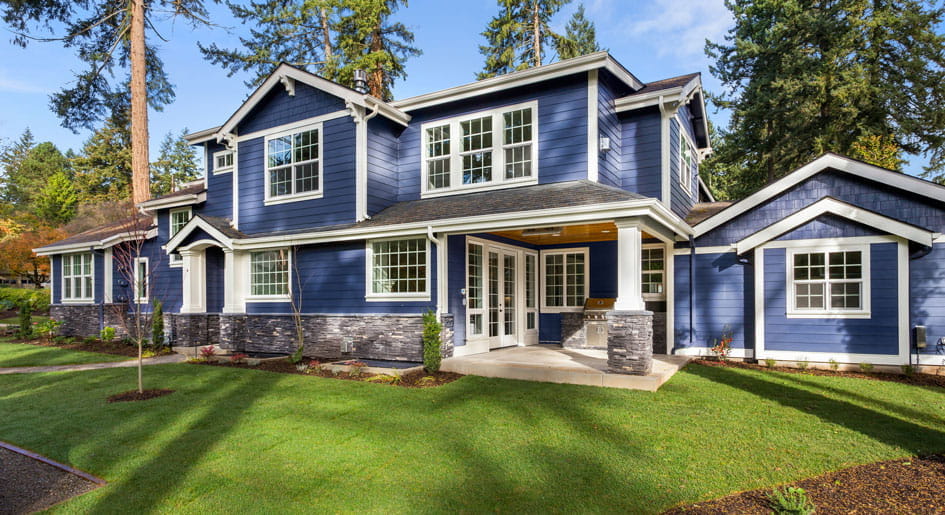Research Brief
Housing
August 2025

Multifamily Momentum Building As
Single-Family Landscape More Nuanced
Encouraging and discouraging trends at play in housing. Existing home sales increased 1.1 percent year over year in July 2025 to a six-month high, aided by a steadily climbing number of listings. The supply of homes at the current sales pace has eased back from the May high of 4.2 months, but the liquidity measure is still at one of its highest levels in more than five years. The added options for prospective buyers has siphoned upward momentum away from home prices. In July, the median home price inched up just 0.3 percent over the past year,which was the smallest margin since late 2023. Recent downward movement in mortgage rates may further open the door for sales. The average 30-year fixed rate mortgage was at 6.58 percent in late August — down from a mean of 6.96 percent early in the year.
 New home sales experiencing greater downward pricing pressure. The market for new homes, meanwhile, is showing clearer signs of softening. Although the number of new single-family houses for sale in July was at its highest level since 2006, the actual number of purchases has been falling on an annual basis after the end of last year. This translated into a 6.2 percent year-over-year drop in the median sale price, breaking below the $400,000 barrier for the first time since September 2021. If this trend continues, it could be a positive for some potential buyers. A recent study from Moody’s contends that the greatest housing shortage nationally is not among low- or high-income households but in the middle-income range.
New home sales experiencing greater downward pricing pressure. The market for new homes, meanwhile, is showing clearer signs of softening. Although the number of new single-family houses for sale in July was at its highest level since 2006, the actual number of purchases has been falling on an annual basis after the end of last year. This translated into a 6.2 percent year-over-year drop in the median sale price, breaking below the $400,000 barrier for the first time since September 2021. If this trend continues, it could be a positive for some potential buyers. A recent study from Moody’s contends that the greatest housing shortage nationally is not among low- or high-income households but in the middle-income range.
Multifamily tailwinds strengthen. Hurdles in the single-family housing market continue to bolster the rental landscape. The best second quarter for apartment net absorption since at least before 1993 brought the nationwide multifamily vacancy rate down to 4.3 percent in June. While above the lows of 2021 and 2022, this measure is still
well under the long-term average of 5.4 percent for this time of year. Vacancy drops occurred across quality tiers — the national Class A, B and C rates were within 10 basis points of one another — and across nearly every major market. The multifamily sector is still contending with elevated new supply pressure, but the strong surge in renter demand is already translating into some upward rent momentum. The average U.S. effective rate rose 2.1 percent year over year in June — the widest margin since the same point in 2023.
Developing Trends
New light shed on nation’s deficit of residences. Moody’s estimates that the country is short roughly 2.0 million homes. More than half of that total comes from an estimated 1.2 million pent-up households — those who would move out on their own if dwellings in their budget were more available. This national discrepancy belies important local dynamics, however. Additional housing in a sparsely populated part of the country does not ameliorate local shortages in major markets. Moody’s estimates that the housing deficit across both ownership and rental options is most acute in the Southeast, parts of the Southwest, and in the Midwest east and southeast of Lake Michigan.
Near-term solutions to shortage lie largely with rentals. The acute shortfall of residential options across numerous communities in the U.S. helps explain the multifamily sector’s robust performance despite recent elevated supply pressure. As the number of single-family permits being pulled continues to decline, the onus for new supply shifts even further to the multifamily sector.
1.1% |
8.2% |
|
Increase in existing homes sales |
Decrease in new homes |
* As of July
Sources: Marcus & Millichap Research Services; Freddie Mac; Moody’s Analytics; National
Association of Realtors; RealPage, Inc.
TO READ THE FULL ARTICLE
